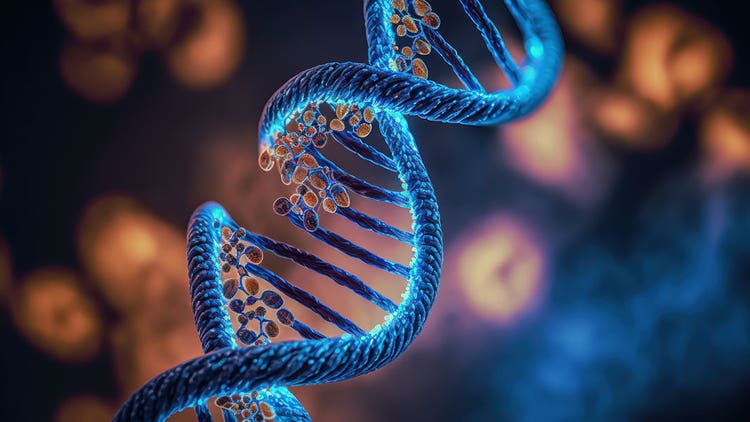What is a Restriction Enzyme?
A restriction enzyme, also known as a restriction endonuclease, is a bacterial defense mechanism that cuts DNA sequences of invading pathogens at precise locations to prevent replication. The resulting DNA fragment sequences provide clues to the identity of the restriction enzyme due to the sequence specificity.
Discovery and Evolution
The discovery of restriction enzymes dates to the 1960s when researchers observed the peculiar behavior of certain bacteria to restrict the growth of phages (viruses) by cleaving their DNA. This phenomenon led to the identification and isolation of these enzymes, which eventually revolutionized recombinant DNA technology by cleaving specific target sequences in DNA.
Due to the sequence specificity for fragmenting DNA, restriction enzymes have become a popular tool for molecular biologists and geneticists to facilitate genetic manipulations, gene cloning, gene editing and gene engineering.
Restriction Endonuclease - Mechanism of Action
Identifying and Cutting DNA sequences
The mechanism of action of restriction enzymes comprises two essential steps - identifying and cutting specific double-stranded DNA sequences known as recognition sequences. These enzymes possess an impressive capacity to locate these recognition sites on the DNA molecule. Once bound to these sites, the restriction enzyme triggers a sequence of biochemical reactions that result in the DNA being cleaved.
Blunt-End vs. Sticky-End Cuts: Precision in DNA Cleavage
There are two primary types of cuts performed by restriction enzymes:
Blunt-end
In a blunt-end cut, the DNA is directly cleaved at the recognition site, producing two DNA fragments with flat or blunt ends.
Sticky-end
Conversely, a sticky-end cut generates DNA fragments with overhanging single-stranded ends, aptly named sticky ends due to their ability to form base pairs with complementary single-stranded sequences.
Types of Restriction Enzymes
Restriction enzymes can be classified
Type I
Type I restriction enzymes are large, multi-subunit enzymes that cleave DNA away from their recognition sites and necessitate both ATP hydrolysis and DNA translocation for their functionality. Examples of Type I enzymes include EcoKI and EcoRI.
Type II
Type II restriction enzymes are exemplified by EcoRI, HindIII, and BamHI, and precisely cleave DNA at or near recognition sites, generating consistent and predictable cleavage patterns.
Type III
Lastly, Type III restriction enzymes like EcoP15 and EcoP1 are multi-subunit enzymes that require multiple recognition sites to cleave DNA.
Palindromic Sequences
Many recognition sites possess a significant attribute known as palindromic sequences, meaning the DNA sequence reads the same on both strands when read in the 5' to 3' direction. However, some restriction enzymes recognize asymmetric sequences, also known as non-palindromic sequences. Asymmetric recognition sequences differ when read in the 5' to 3' direction on each strand. The palindrome characteristic is vital as it ensures the precise and symmetrical cleavage of DNA by restriction enzymes. Nonetheless, recognition sequences can vary extensively among different restriction enzymes, granting researchers the flexibility to select or design specific enzymes based on their desired DNA cleavage patterns for diverse applications.
See how Danaher Life Sciences can help
Factors Influencing Restriction Enzyme Activity
- Many restriction enzymes exhibit their highest activity at 37°C, but there are exceptions.
- pH is critical in influencing restriction enzyme binding specificity and activity. Most studies are conducted at pH 7.5.
- Restriction enzymes vary in their sensitivity to ionic strength. Suboptimal ionic strength or ion type can lead to non-specific DNA cleavage.
- Restriction enzymes rely on specific cofactors, like magnesium, to cleave DNA at their recognition site.
- Inhibitors can adversely affect enzyme activity by obstructing the active sites or interfering with the enzyme-substrate interactions, leading to decreased enzymatic efficiency.
Restriction Endonuclease - Uses
- Restriction enzymes enable the insertion of foreign gene fragments into vector molecules through the cutting (opening) of DNA, resulting in the generation of recombinant DNA molecules.
- They also allow for the characterization of amplified DNA through a technique called restriction fragment length polymorphism (RFLP) analysis. RFLP elucidates variations in gene sequences by chronicling the lengths of the DNA fragments after digestion.
- Restriction enzyme digestion is employed for DNA fingerprinting and forensic analyses. The cleaved DNA will generate a distinct pattern that can be used to identify an individual or suspect.
- Restriction enzymes play a crucial role in genome editing by creating targeted DNA breaks that enable precise modifications to be made to the genome.
- In synthetic biology and bioengineering, restriction enzymes are valuable tools for manipulating DNA sequences, enabling the design and construction of novel genetic circuits and organisms with desired functionalities.
Limitations and Considerations
- A limitation of restriction enzymes in genome editing are possible off-target effects, where they may mistakenly cleave DNA at sites with similar sequences causing unintended mutations.
- DNA methylation, an epigenetic modification, can affect restriction enzymes, as methyl groups at the recognition sites can block or hinder their ability to bind and cleave DNA.
FAQs
What is a restriction endonuclease?
A restriction endonuclease is an enzyme capable of identifying DNA sequences and cutting the DNA at those specific sites in a blunt-end or sticky-end pattern.
What are the two functions of restriction enzymes?
The two functions of restriction enzymes are recognizing specific DNA sequences and cleaving the DNA at those sites.
What is the difference between an enzyme and a restriction enzyme?
Enzymes are general proteins that act as catalysts in various biological processes. Restriction enzymes are a specific type of enzyme that recognizes and cuts DNA at specific sequences.
What is the role of restriction enzymes in the process of transformations?
The role of restriction enzymes in the process of transformation is to cleave and modify DNA at specific recognition sites, facilitating the insertion of foreign DNA fragments into the recipient organism's genome.
What is the difference between restriction enzymes and restriction endonucleases?
Restriction enzymes and restriction endonucleases refer to the same class of enzymes. Both are specialized proteins that recognize specific DNA sequences and cleave the DNA at those sites.
See how Danaher Life Sciences can help
Restriction Enzymes (Restriction Endonuclease)
